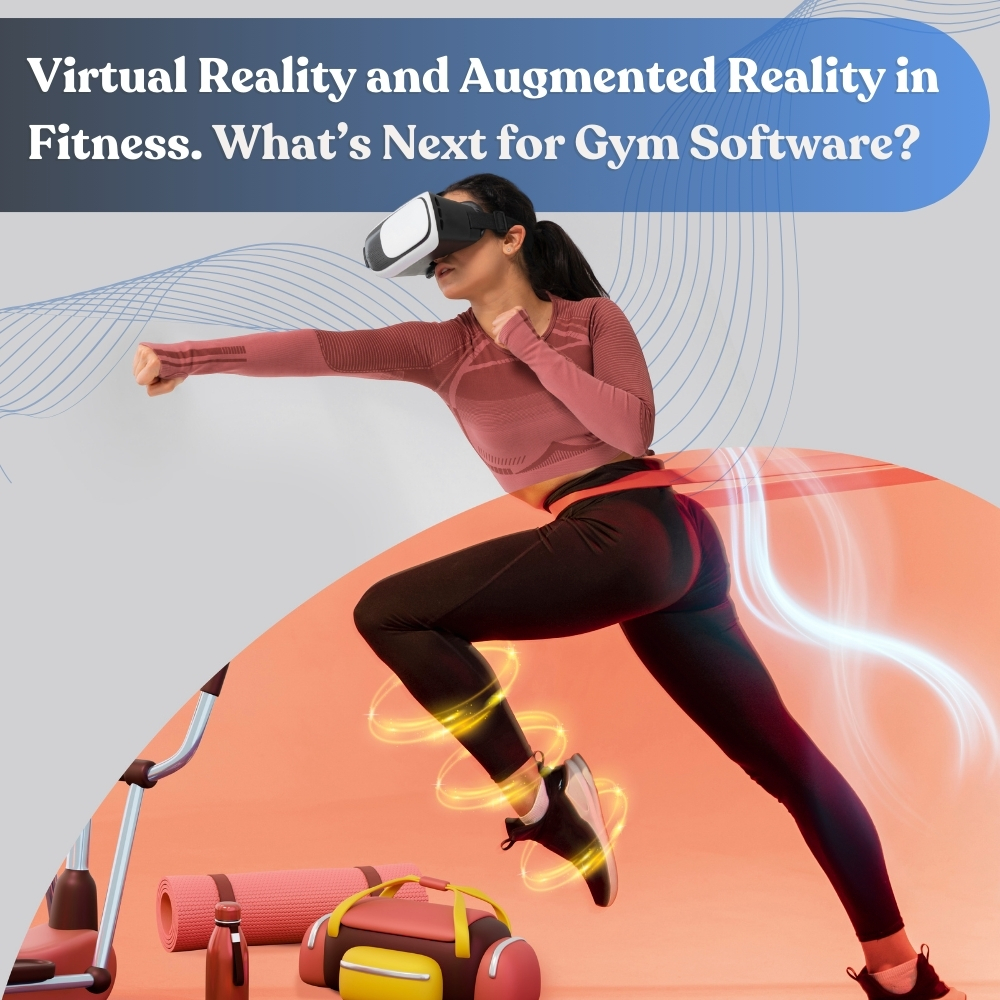
- By Dotbooker
- Jan 06, 2025
- 286
Virtual Reality and Augmented Reality in Fitness: What’s Next for Gym Software?
The fitness industry is not far behind in an era where digital transformation is revolutionizing every sector. Today, gym-goers are increasingly seeking personalized, convenient, and varied workout experiences that fit seamlessly into their busy lives.
Herein lies a challenge many fitness enthusiasts face: finding the time and motivation to stick to their exercise routines. This is where advanced gym management software comes into play, paving the way for an integration of technology that enhances user engagement and redefines the concept of 'going to the gym'.
The Rise of VR and AR in Fitness
Virtual Reality (VR) and Augmented Reality (AR) technologies have started to transform the traditional gym experience by offering immersive and interactive environments. Imagine donning a VR headset to climb the steep terrains of Machu Picchu or sprinting alongside a virtual coach on a scenic beach, all from the comfort of your local gym. These technologies make workouts more engaging and fun, significantly boosting motivation.

Integrating VR and AR into Gym Management Software
To incorporate VR and AR, gym business management software needs to evolve. Integrating these technologies involves more than just hardware; software solutions must also be robust enough to support real-time data integration and analysis. This means that gym membership management software must be capable of tracking VR and AR workout data to provide insights into performance metrics and progress, just as traditional workouts do.
Enhanced User Experience
One of the primary advantages of integrating VR and AR into gym software is enhancing the user experience. These technologies can help create personalized workout regimes that adapt to the fitness level and goals of the individual, all while keeping them engaged through gamified experiences. Moreover, AR can be used to correct the form and posture of the exerciser, thereby reducing the risk of injury and improving workout effectiveness.

Challenges and Solutions in Integrating VR and AR into Gym Management Software
Integrating Virtual Reality (VR) and Augmented Reality (AR) into gym management software presents several challenges, but also offers potential solutions that could drive widespread adoption and transform the fitness industry.
Challenges
- High Costs: The primary barrier to integrating VR and AR into gyms is equipment and technology development costs. VR headsets and AR systems require significant investment, which can be prohibitive for many fitness centers, especially small to medium-sized ones.
- Complex Implementation: Setting up VR and AR technologies involves more than just purchasing equipment; it requires significant changes to the gym’s infrastructure, including space modifications and installing advanced sensors and cameras. This complexity can deter gyms from adopting these technologies.
- User Adaptation: While younger demographics may quickly adapt to using VR and AR in their workouts, older gym members might find it more challenging. There's a learning curve associated with using new technologies, which could affect overall user experience and satisfaction.
- Maintenance and Upkeep: VR and AR devices and their accompanying software require regular updates and maintenance to ensure they function correctly and benefit from the latest features and security enhancements. This ongoing need can put a strain on the resources of gym operators.
Solutions
- Subsidized and Leased Equipment Options: To mitigate the high costs of VR and AR equipment, manufacturers and gym management software providers could offer subsidized rates or leasing options. This would lower the entry barrier for gyms and fitness centers, making the technology more accessible.
- Modular Integration: Developing gym software that allows for modular integration of VR and AR can simplify the implementation process. Gyms could start with basic packages and gradually scale up their technology use as they become more comfortable and their budget allows. This approach also helps in managing the spatial and infrastructural changes required in a more phased and controlled manner.
- User Training and Support: To help users adapt to VR and AR technologies, gyms can provide training sessions and on-demand support. This could be facilitated through the gym management software itself, with interactive guides, tutorial videos, and a helpdesk feature that assists members in using the technology effectively.
- Software as a Service (SaaS) Models: Offering VR and AR capabilities as part of a SaaS model can alleviate some of the maintenance concerns. In this model, the software provider is responsible for regular updates, bug fixes, and the introduction of new features, which helps ensure that the gym's software remains up-to-date without requiring extensive input from the gym’s own staff.
- Collaborations and Partnerships: Gyms could collaborate with tech startups and companies specializing in VR and AR to reduce costs and accelerate adoption. These partnerships could also lead to innovative uses of VR and AR in fitness, tailored to the specific needs of gym-goers.
Feedback Mechanisms: Integrating robust feedback mechanisms within the gym management software can help gyms understand how users interact with VR and AR technologies and identify areas for improvement. This data can drive better customization of the technology to suit different fitness levels and preferences, enhancing user satisfaction and retention.
By addressing these challenges with thoughtful and innovative solutions, the integration of VR and AR into gym management software can become more feasible and revolutionize the fitness experience, making it more immersive, personalized, and engaging for users.
What’s Next for Gym Software?
As we look towards the future, integrating VR and AR into gym software appears promising and inevitable. These technologies offer a new realm of possibilities for engaging gym-goers, providing them with a unique fitness experience that keeps them returning.
The next step for developers of gym software is to ensure that these technologies are integrated seamlessly, enhancing the capabilities of gym management systems to support the sophisticated needs of modern fitness centers.
In a digital age where the boundaries of what's possible are constantly being pushed further, gym management software stands at the forefront, ready to revolutionize the fitness industry.
For those in the business of fitness, leveraging these technologies could very well be the key to attracting and retaining members. Platforms like Dotbooker are already on their way to making sophisticated gym management solutions accessible, paving the path towards a more immersive and interactive fitness future.
By embracing the full potential of VR and AR, gym management solutions are not just catching up with the times but are setting the stage for a future where fitness is more accessible, engaging, and diverse than ever before.
Popular Blogs

- Oct 20, 2022
- 2785

- Sep 08, 2024
- 1602

- Nov 11, 2022
- 1226

- Sep 16, 2024
- 1078
Transform your business now!

Get an expert consultation for your business's streamlined operations.